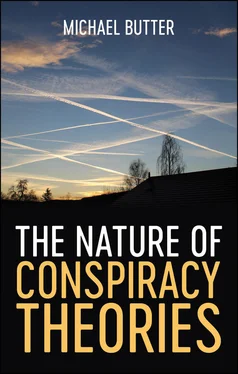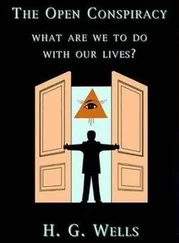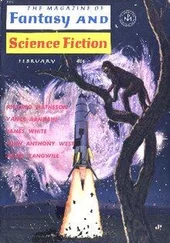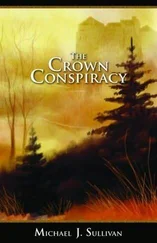Indeed, it is often precisely this sceptical attitude that allows scholars to identify the social causes and effects of the phenomena they are interested in. Had the historians Paul Boyer and Stephen Nissenbaum believed in the existence of witches, they would never have succeeded in demonstrating that the infamous witch trials of 1692 were triggered by an economic conflict in Salem Village. 28Whether we are dealing with witchcraft or conspiracy theories, it is crucial not to devalue or even pathologize the ideas in question. Nor should we make hasty generalizations about a ‘natural’ link between conspiracist thinking and political extremism or a tendency towards violence. The fact that such assumptions about conspiracy theories are, unfortunately, still made, not just in everyday discourse but also occasionally by academics, should oblige scholars to take extra care when using the term; it does not, however, make it impossible.
Conspiracy theories as theories
Jack Bratich’s study is the most theoretically advanced critique of the concept of ‘conspiracy theory’. He is by no means the only one keen to dispense with the term, however. Conspiracy theorists themselves reject it because they claim to be revealing the truth and not just spreading some theory or other. They understand the word theory in its conversational sense of ‘mere theorizing’ as opposed to practical experience and truth. Conversely, some scholars (exclusively German, interestingly enough) reject the term ‘conspiracy theory’ because, to them, theories are something noble and scientific and thus the very opposite of conspiracy theories. In their view, conspiracy theories use circular rather than systematic arguments and are ultimately irrefutable. For this reason, Armin Pfahl-Traughber prefers the term ‘conspiracy ideology’, a view shared by historian Wolfgang Wippermann. According to Pfahl-Traughber, this term is more appropriate because conspiracy theories, unlike scientific theories, are ‘not capable of being corrected by evidence to the contrary’, that is, they are not falsifiable; rather, they are ‘entrenched, monocausal and stereotypical attitudes’ displaying a ‘one-sided fixation’. Furthermore, conspiracy theories do not ‘reflect on the appropriateness of their fundamental assumptions’ but take them to be an ‘unalterable dogma’. Therefore, he concludes that the term ‘conspiracy theory’ should only be used in quotation marks, and that it is better to speak of ‘conspiracy ideologies’. 29
This would only shift the problem elsewhere, however. Pfahl-Traughber clearly has a very traditional and accordingly narrow definition of ideology in mind, equating it with false consciousness in the Marxist sense. For him, it is possible and desirable to leave the ideology-led ‘misunderstanding’ of the world behind and progress to an ideology-free understanding of it. This is at odds with the prevailing view in cultural studies and the social sciences, however, which holds that there is no such thing as ideology-free knowledge. Our understanding of the world is always governed by basic assumptions that we do not question and are often barely aware of. Consequently, Pfahl-Traughber’s proposal wouldn’t solve the problem he identifies since, for many people, the term ‘ideology’ does not have the negative connotations he intends to convey.
Furthermore, although conspiracy theories differ from scientific theories in many respects, there are nonetheless certain similarities. The philosopher Karl Hepfer, for instance, insists that conspiracy theories, like scientific theories, provide answers to epistemological questions, thus allowing a ‘better understanding of the world’. 30While this understanding may be objectively false, in subjective terms conspiracy theories do what we expect of theories in general: they explain past events and allow predictions about the future. Thus, in her earlier-mentioned article on the ‘Great Replacement’, Eva Herman prophesies that the events unfolding in Europe, and especially Germany, will lead to a war between cultures and religions, native populations and migrants – a conclusion she derives from the logic of the evil plan and the conflicts it has allegedly already led to: ‘The unrest already occurring among the various religious cultures paints an ugly picture of the future.’ Churchill is less explicit on this point due to the brevity of his text. But his words, too, suggest an underlying fear that, having once secured Russia, the conspirators will turn to other countries, notably Britain.
Above all, however, the argument that conspiracy theories differ from scientific ones in that they are not falsifiable is invalid. Conspiracy theories can of course be disproved; indeed, it happens all the time. Although the debunking of such theories is not as popular on the internet as their formulation, it is by no means rare. And given the obviously problematic basic assumptions of conspiracist thinking in terms of its conception of humanity and history, it is often quite easy to do. The trouble is that the vast majority of diehard conspiracy theorists refuse to accept even conclusive counter-evidence. Instead, they ignore it, seek to invalidate it or even try to turn it into a proof of their suspicions, as I show in detail in the next chapter, which deals with the argumentation strategies of conspiracy theorists. The problem in this case is not, therefore, the theory itself, but the behaviour of those who believe in it.
But even this behaviour is by no means so different from that of the proponents of many scientific theories. Inconsistent though it may be with the scientific ideal, in practice even serious academics sometimes have great difficulty in accepting the refutation of their ideas. They too can be positively irrational, clinging to their views even when they fly in the face of the facts. This phenomenon was demonstrated by Thomas Kuhn in the 1960s with reference to the great paradigm shifts in the history of Western science, but it also applies at a lower level, to scientific theories in the narrower sense. Many economists, for example, still hold fast to the notion that subjects behave entirely rationally – something psychologists claim to have disproved long ago. Similarly, social scientists operating along traditional Marxist lines persist in views that researchers subscribing to other schools of thought regard as obsolete. In these debates, each side accuses the other of mistaking reality, and since both parties reach their conclusions from very different positions, they are highly unlikely to be convinced by any argument proceeding from the theoretical foundation of the opposite point of view.
What counts as refuted and what does not is thus – at least to a certain degree – also a matter of opinion. It depends on the underlying assumptions of the parties concerned, and here the divide between scientific disciplines is often as great as that between conspiracy theorists and non-conspiracy theorists. As far as the debate between the latter is concerned, we could say – drawing on Kuhn – that the opposing parties operate within different paradigms. What appears logical to one strikes the other as absurd, and vice versa. The problem with conspiracy theories is not, therefore, that they are wrongly described as theories. There are plenty of arguments in favour of such a description. What is problematic is the fact that these theories are based on assumptions regarding human agency and the dynamic of historical processes that are no longer shared by the modern sciences. This explains both the attraction and the stigma of conspiracy theories today.
1 Barkun, M., A Culture of Conspiracy: Apocalyptic Visions in Contemporary America, 2nd edn., Berkeley: University of California Press, 2013, pp. 1–14; Cubitt, G., ‘Conspiracy Myths and Conspiracy Theories’, Journal of Anthropological Society of Oxford 20(1), 1989: pp. 12–26. 2 See Oberhauser, C., ‘Nesta Helen Webster (1876–1960)’, in Reinalter, H. (ed.) Handbuch der Verschwörungstheorien, Leipzig: Salier, 2018, pp. 319–26. 3 Webster, N. H., The French Revolution: A Study in Democracy, London: Constable, 1919; The French Terror and Russian Bolshevism, London: Boswell, 1920; World Revolution: The Plot Against Civilization, London: Small, Maynard & Company, 1921; Secret Societies and Subversive Movements, London: Boswell, 1924. For an analysis of her conspiracy theories and their impact, see Lee, M. F., Conspiracy Rising: Conspiracy Thinking and American Public Life, Santa Barbara, CA: Praeger, 2011. 4 See Olmsted, K. S., Real Enemies: Conspiracy Theories and American Democracy, World War I to 9/11, Oxford: Oxford University Press, 2009, p. 4. 5 Von Bieberstein, J. R., Die These von der Verschwörung, 1776–1945: Philosophen, Freimaurer, Juden, Liberale und Sozialisten als Verschwörer gegen die Sozialordnung, Bern: Lang, 1976. 6 Lincoln, A., Campaign Speech, 16 June 1858, Springfield, IL, at http://teachingamericanhistory.org/library/document/house-divided-speech. 7 Barkun, A Culture of Conspiracy, p. 6. 8 Pfahl-Traughber, A., ‘“Bausteine” zu einer Theorie über “Verschwörungstheorien”: Definition, Erscheinungsformen, Funktionen und Ursachen’, in Reinhalter, H. (ed.) Verschwörungstheorien: Theorie – Geschichte – Wirkung, Innsbruck: StudienVerlag, 2002, p. 31. 9 Pfahl-Traughber, ‘“Bausteine” zu einer Theorie über “Verschwörungstheorien”’, p. 31.10 Keeley, B. L., ‘Of Conspiracy Theories’, in Coady, D. (ed.) Conspiracy Theories: The Philosophical Debate, rev. edn., Aldershot: Ashgate, 2006 [1999], p. 58.11 Grimes, D. R., ‘On the Viability of Conspiratorial Beliefs’, PLOS ONE 11(3), 2016, doi: 10.1371/journal.pone.0147905.12 Keeley, ‘Of Conspiracy Theories’, p. 58.13 Byford, J., Conspiracy Theories: A Critical Introduction, Basingstoke: Palgrave Macmillan, 2011, p. 33.14 Popper, K., The High Tide of Prophecy: Hegel, Marx, and the Aftermath, 4th and rev. edn., Vol. 2 of The Open Society and Its Enemies, London: Routledge, 1962 [1945], p. 93 (italics in original).15 Popper, The High Tide of Prophecy, pp. 94, 95 (italics in original).16 For an overview of the conspiracy theories on the assassination, see Knight, P., The Kennedy Assassination, Edinburgh: Edinburgh University Press, 2007, pp. 75–104.17 Many of these superconspiracy theories were first published in Steve Weissman’s anthology Big Brother and the Holding Company: The World behind Watergate, Palo Alto: Ramparts Press, 1974. Jim Hougan presents Nixon as a victim of the Secret Service who staged the affair to keep a CIA-operated call girl ring secret. See Hougan, Secret Agenda: Watergate, Deep Throat, and the CIA, New York: Random House, 1984. For a discussion of how the Senate Committee and the journalist tried to avoid being perceived as conspiracy theorists, see Thalmann, K., The Stigmatization of Conspiracy Theory since the 1950s: ‘A Plot to Make Us Look Foolish’, London: Routledge, 2019, pp. 153–8.18 Cassam, Q., Conspiracy Theories, Cambridge: Polity Press, 2019, p. 7.19 McKenzie-McHarg, A., ‘Conspiracy Theory: the Nineteenth-Century Prehistory of a Twentieth-Century Concept’, in Uscinski, J. (ed.) Conspiracy Theories and the People Who Believe Them. Oxford: Oxford University Press, 2019, pp. 62–81.20 Knight, P., Conspiracy Culture: From Kennedy to The X Files, London: Routledge, 2000, p. 11.21 Fenster, M., Conspiracy Theories: Secrecy and Power in American Culture, 2nd edn., Minneapolis: University of Minnesota Press, 2008, p. 242; Herman, E., ‘Einwanderungs-Chaos: Was ist der Plan?’, Wissensmanufaktur, 22 August 2015, at http://www.wissensmanufaktur.net/einwanderungs-chaos.22 ‘187 radical organizations’, in the comments to C. Spiering, ‘John Podesta Fuels Russian Conspiracy Theory: Urges Electoral College to Revisit Election’, Breitbart, 12 December 2016, https://www.breitbart.com/politics/2016/12/12/john-podesta-fuels-russian-conspiracy-theory-urges-electoral-college-revisit-election/23 See, for example, this article, which also reproduces images of the memo: ‘CIA Memo 1967: CIA Coined & Weaponized the Label “Conspiracy Theory”’, at https://steemit.com/history/@thelastheretik/cia-coined-and-weaponized-the-label-conspiracy-theory.24 See, for example, Räikkä, J. and Basham, L., ‘Conspiracy Theory Phobia’, in Uscinski, J. (ed.) Conspiracy Theories and the People Who Believe Them, New York: Oxford University Press, 2019, pp. 178–86.25 Bratich, J. Z., Conspiracy Panics: Political Rationality and Popular Culture, Albany: SUNY Press, 2008, p. 4.26 An entire Wikipedia article is dedicated to this alleged connection: https://en.wikipedia.org/wiki/Saddam_Hussein_and_al-Qaeda_link_allegations.27 For the classic definition of conspiracy theories as counter-narratives, see Fiske, J., Media Matters: Everyday Culture and Political Change, Minneapolis: University of Minnesota Press, 1994. For studies that demonstrate that outside of the West conspiracy theories are often the official version of events, see, for example, Borenstein, E., Plots against Russia: Conspiracy and Fantasy after Socialism, Ithaca, NY: Cornell University Press, 2019; and Gray, M., Conspiracy Theories in the Arab World: Sources and Politics, London: Routledge, 2010.28 Boyer, P. S. and Nissenbaum, S., Salem Possessed: The Social Origins of Witchcraft, Cambridge, MA: Harvard University Press, 1974.29 Pfahl-Traughber, ‘“Bausteine” zu einer Theorie über “Verschwörungstheorien”’, p. 31.30 Hepfer, K., Verschwörungstheorien: Eine philosophische Kritik der Unvernunft, Bielefeld: Transcript, 2015, p. 24.
Читать дальше












